pendulum escapement
This is a pendulum escapement made out of card.
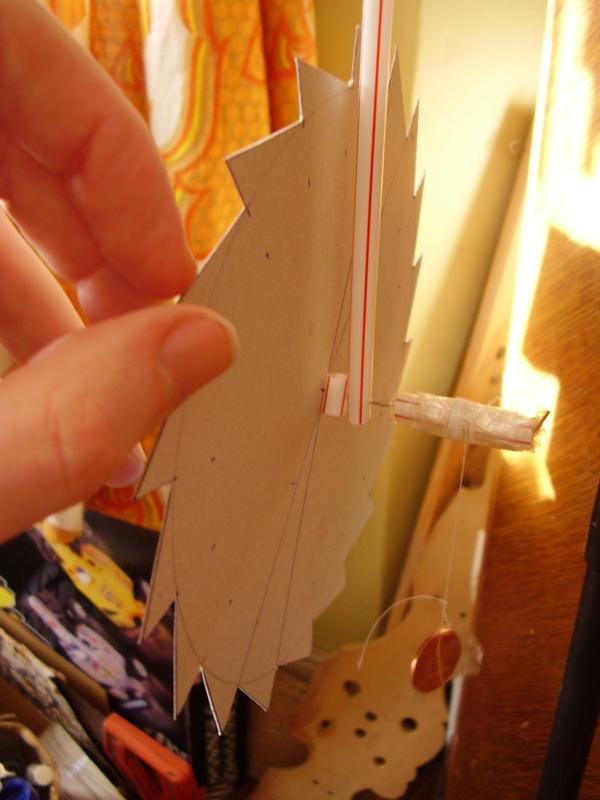
The penny pulls the cotton round the straw & rotates the wheel: to get an even rotation I had to increase the diameter of the straw by wrapping tape round it.
This shows it with the pendulum & escapement attached
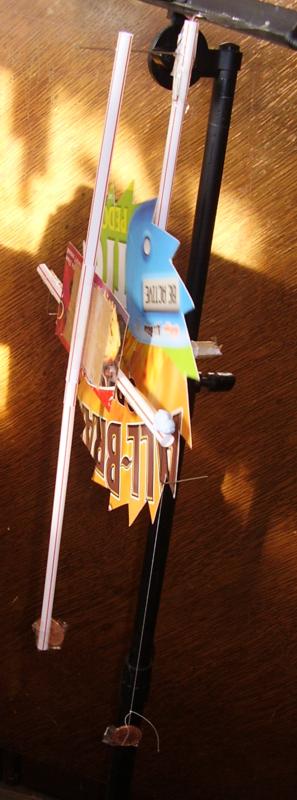
Notice the blue-tack centralising the pendulum. The escapement cross-piece can be slid up & down to adjust the clearance between the paperclips and the teeth.
The pendulum should be tried first without the extension and weight, it is much easier to get it going fast but much more satisfying if you can eventually get it going slowly.
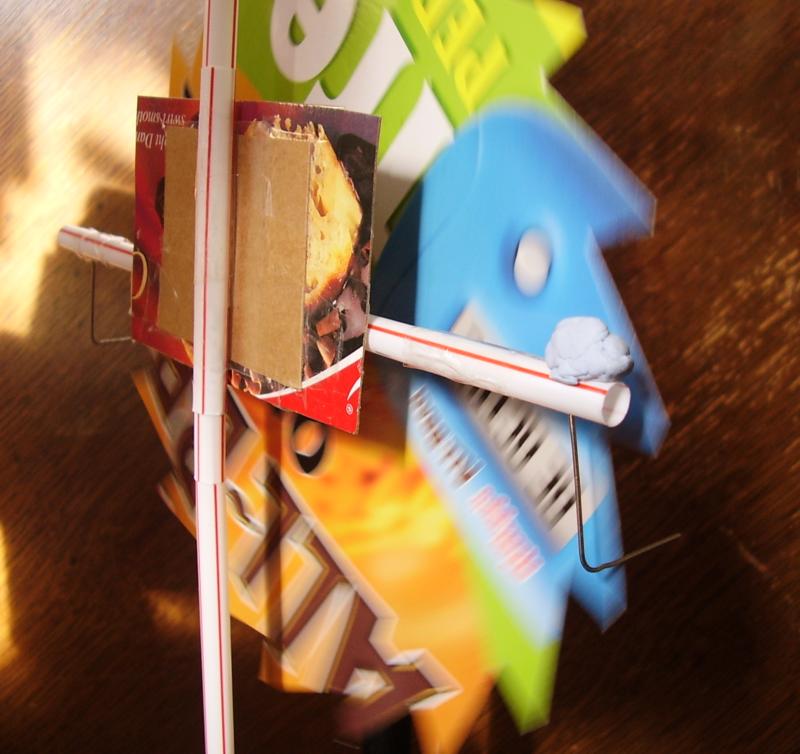
This ran for three minutes with an 18 inch drop in the driving weight
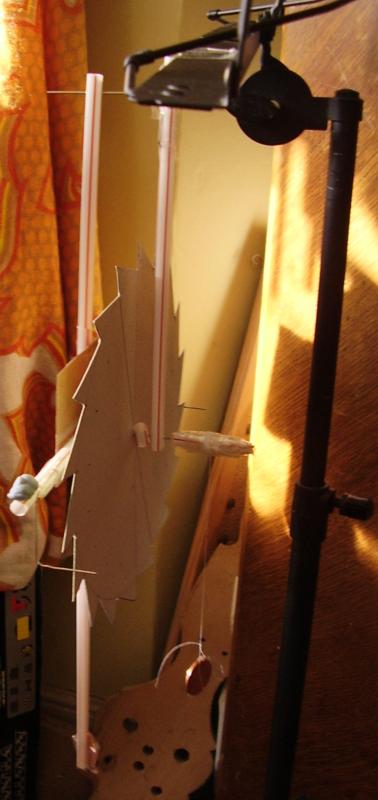
Movie of escapement on YouTube
square escapement wheel
I have recently found you can make the escapement wheel from a one inch square of card
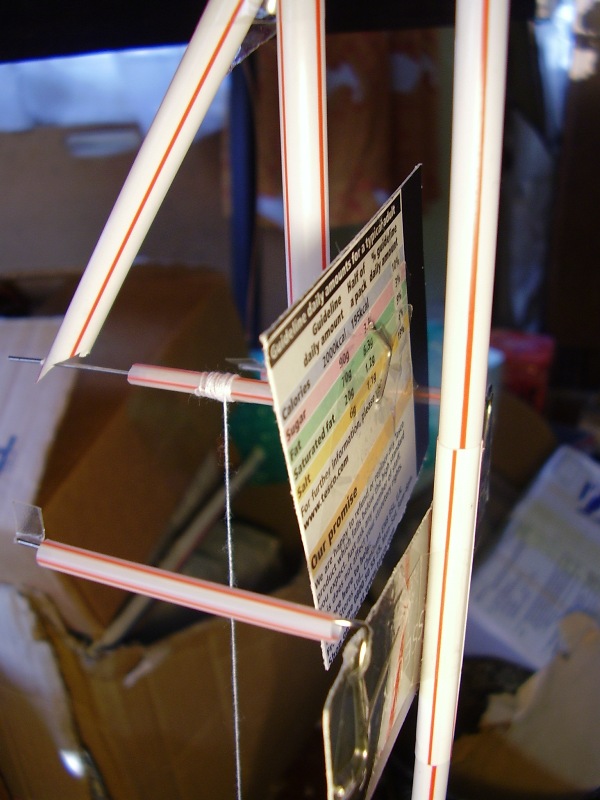
this is a very easy shape to mark out & cut and it seems to work a lot better than a big escapement wheel. Sleeving the pins with bits of thin drinking straw reduces the friction a lot. The pins should bear on the wheel quite a long way down from its center. The distance between the pins should be more than the width of the square but less than its diagonal. In designs where the pivot of the pendulum is fairly close to the axis of the wheel one pin should be more off-centre than the other. The distance between the wheel axis and the pivot shouldn't be less than the side of the wheel
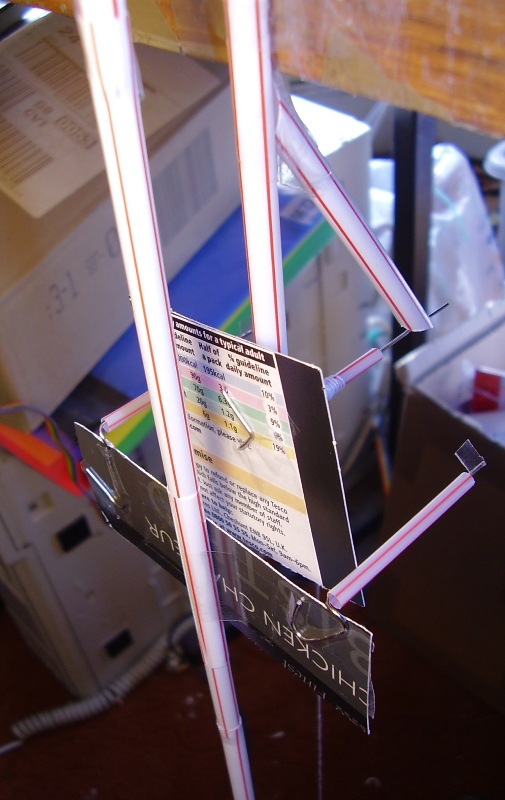
This was made with about a two gram blue-tack weight pulling the cotton round and a pendulum made from three drinking straws with a two gram weight at the end. The straw supporting the escapement wheel & bearing was sellotaped to the edge of a table. I found the bearing works better if you support it at each end, like a bicycle wheel fork.
Movie of square escapement
another movie
single tooth escapement wheel
Carrying this idea to its natural conclusion brings us to an escapement wheel with just one tooth
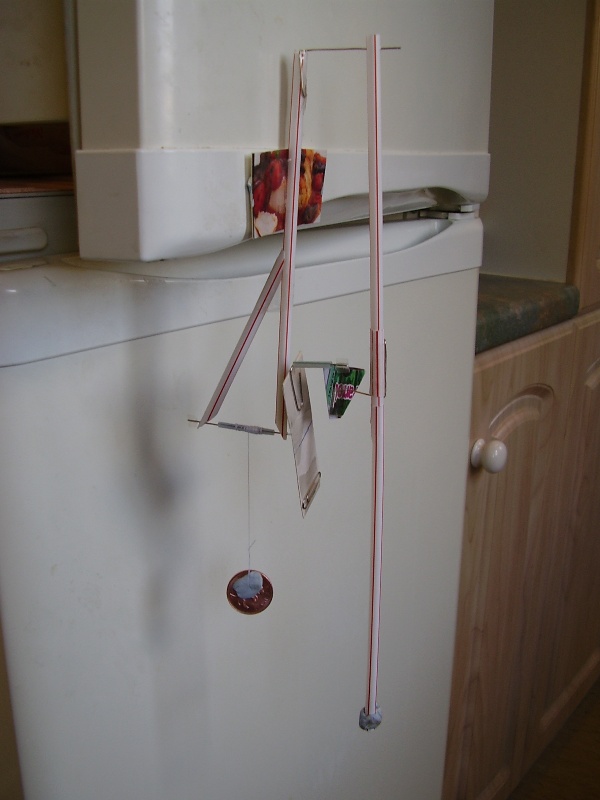
Movie
In fact the tooth is mounted on the pendulum and a single peg is mounted on the wheel, counterbalanced by a paperclip at the other end
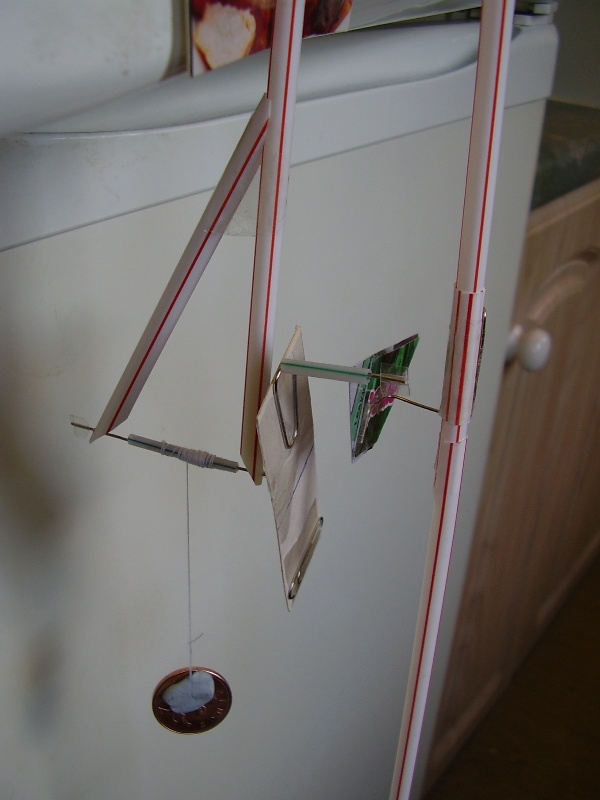
Movie
Because there is only one peg, its spacing from the centre isn't critical. I made the tooth out of two bits of card superimposed because I kept trying to optimise the shape, in fact it isn't very critical. It's mounted on a slider attached to the pendulum that allows you to adjust it.
balance arm
This is an escapement-driven balance arm
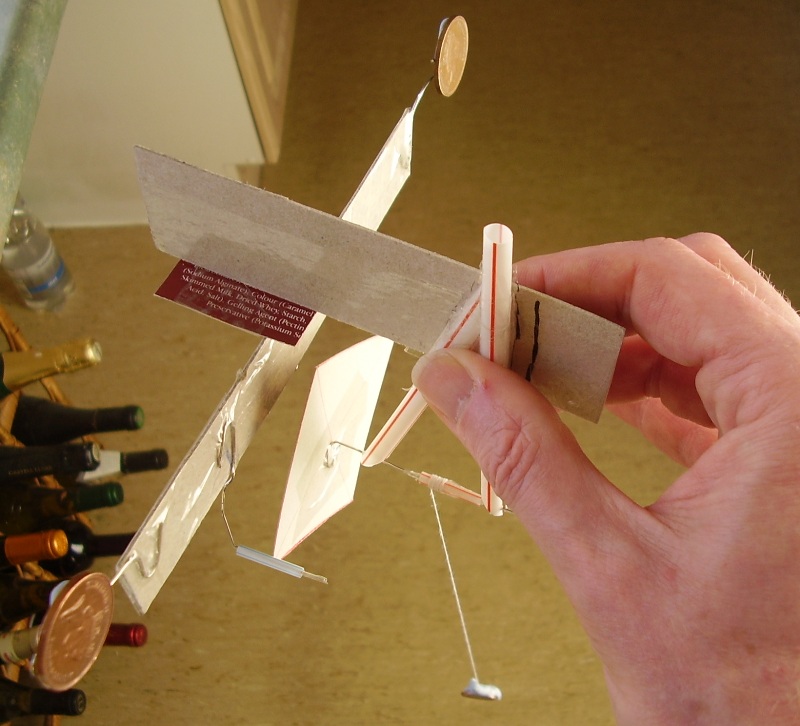
Movie
Unlike a pendulum it doesn't depend on the force of gravity (although the driving weight does) so it will work on a ship or in space.
It uses the same square cardboard wheel as the pendulum escapement
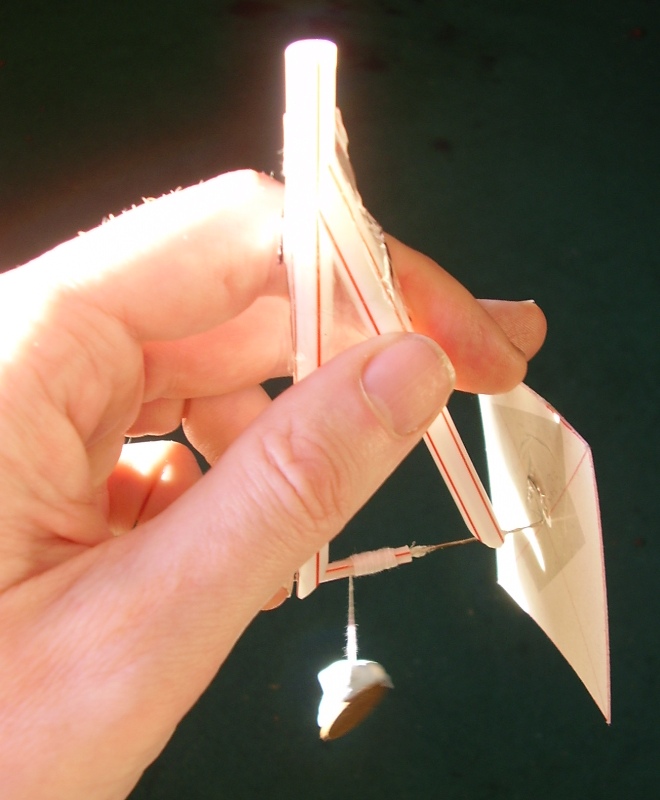
This is a picture of the balance arm
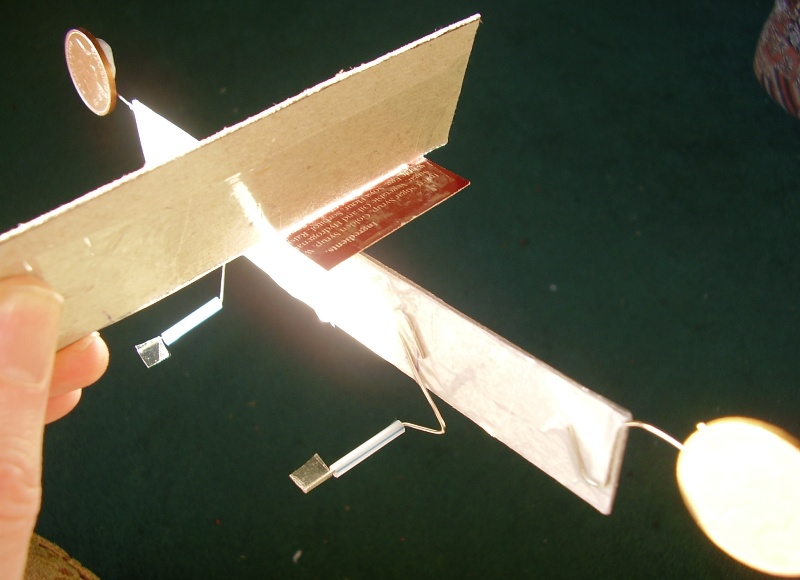
I just hold them together as a convenient way of demonstrating it.
Unlike a pendulum you can slow it right down by increasing the weights or by using a very long arm, it's difficult to slow a pendulum down because in order to halve the speed you have to quadruple the length, and so on. I managed to get this going at four 'tic-tocks' every ten seconds by using a three-foot length of bamboo for the balance arm.
Movie
Another movie
escapement-driven mobile
Because it is easier to balance things that pivot round a vertical axis it is better to make a balance-arm escapement driven horizontally by the cotton going over a pulley. If a balance arm is mounted on the wheel assembly as well as on the escapement arm the whole thing can be suspended from a bit of cotton attached to a light fitting. The two balance arms then move slowly in a kind of horizontal scissor motion
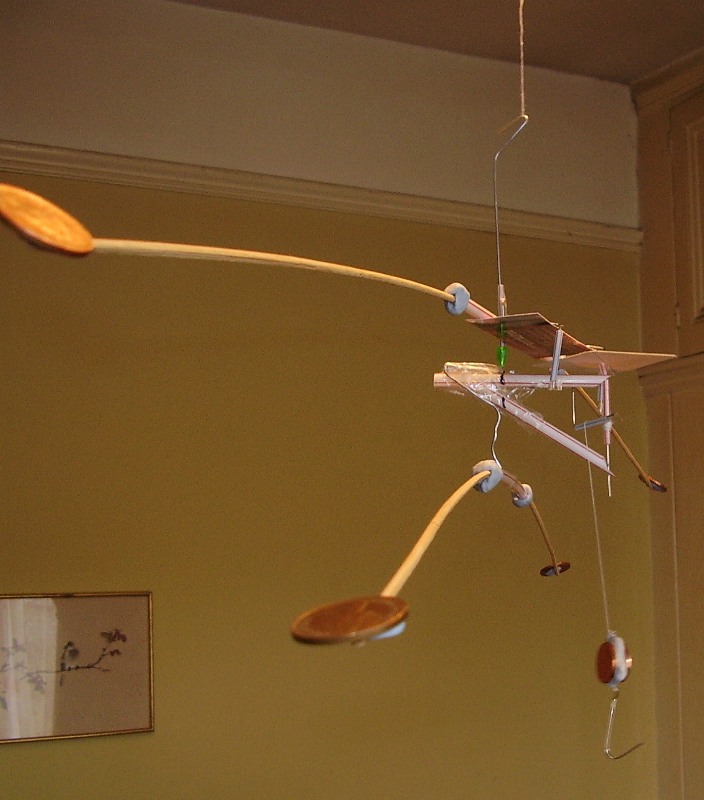
Movie
This can be made by modifying the bits of the earlier balance-arm escapement, there is just a pulley made from a paperclip with a thin drinking-straw sleeve. Also a bit of bent wire which forms the suspension hook for the escapement wheel and also the pivot for the balance arm. The second balance arm is attached rigidly to the bent wire at the bottom. So in effect the lower balance arm is rigidly attached to the wheel bearing.
Movie

similar thing on YouTube
balance wheel
This is a balance wheel
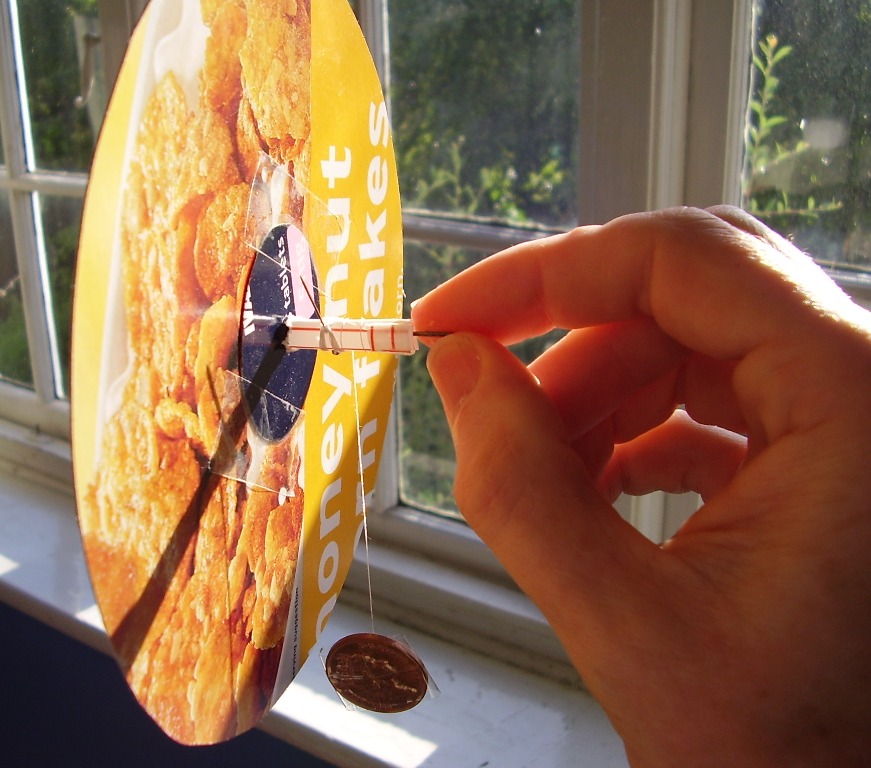
It consists of a cardboard flywheel on a short length of drinking straw, the bit of straw has bearings at each end made of more bits of straw taped across with pinholes in the middle. It's better to use plastic beads for the bearings but I didn't have any. The wheel rotates round a bent paperclip running up the middle of the straw which acts as a handle. A pin is pushed through the straw and a penny on a bit of cotton wound alternately clockwise & anti-clockwise round the axle. The direction of winding is reversed each turn by looping the cotton round the pin
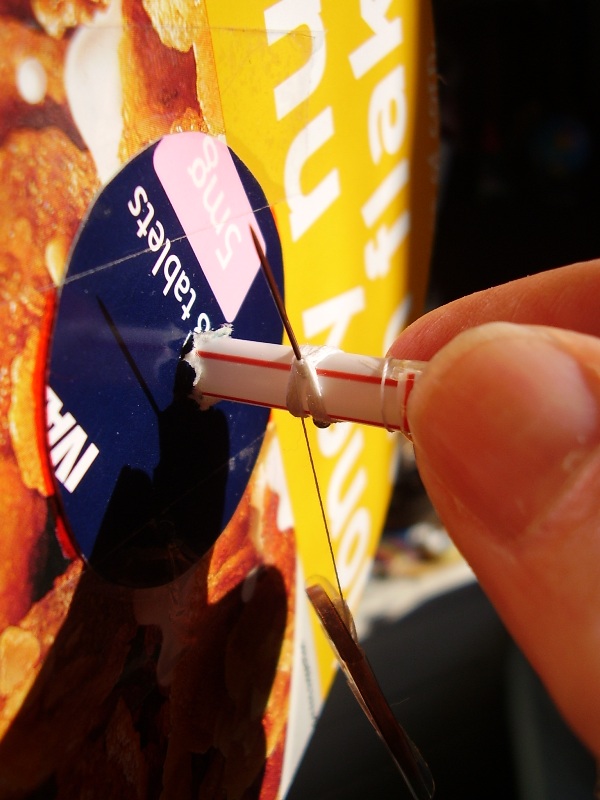
As the cotton pulls on the axle it makes it rotate,it slips off the point of the pin as it gets to the bottom & starts pulling the other way
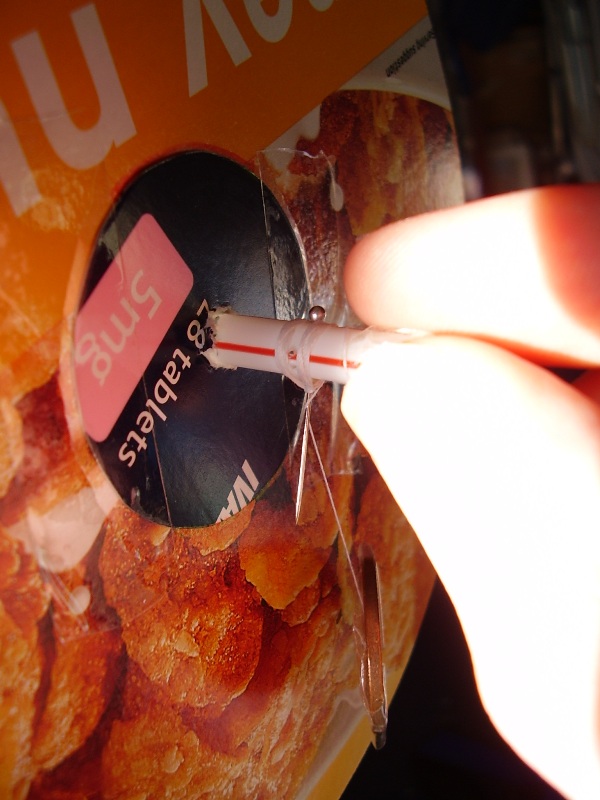
in the pictures I'm deliberately pinching the end of the straw to stop it rotating, usually you hold it by the end of the paperclip hidden between my thumb & finger.
Movie of balance wheel
water clock
This is a water clock
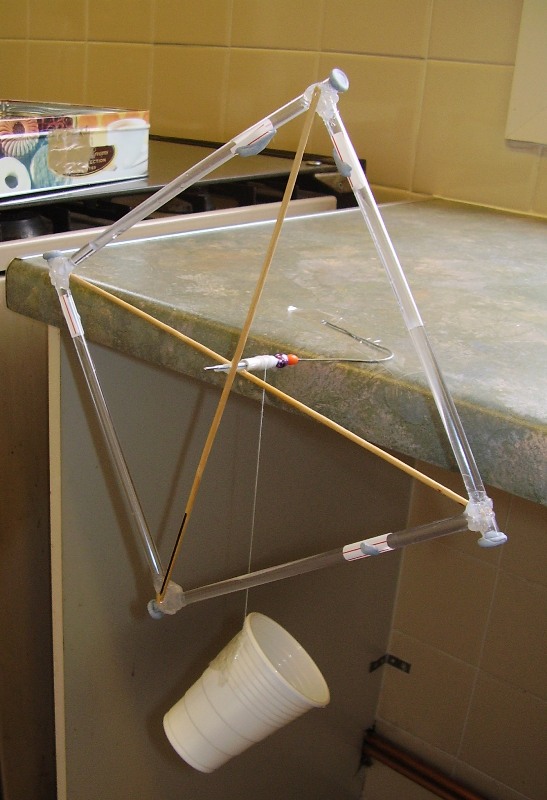
It is made from four plastic tubes glued together to form a square, each tube butts onto its neighbour and a pinhole in the tube wall allows water to flow from one tube to the next. The other end of each tube is sealed with blue tack. It has adjustable blue-tack weights on the tubes to balance it.
The square is half filled with water using a drinking straw as a pipette, the square has to be rotated to remove air bubbles and allow the water to form an uninterrupted column. The plastic cup is filled with water to act as a driving weight. The wheel rotates slowly because the water has to flow through the pinholes.
Movie of water clock
This is one made from drinking straws, it rotated about once every eighty seconds; it contained about twenty grams of water and the driving weight is about thirty grams of water.
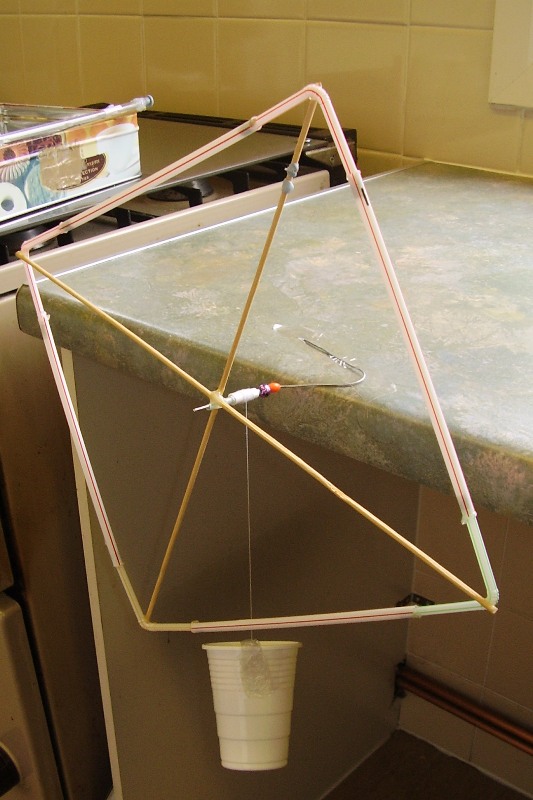
The ends of the bendy straws are covered with bits of foil with a pinhole and then glued in place joining onto wider diameter straight straws
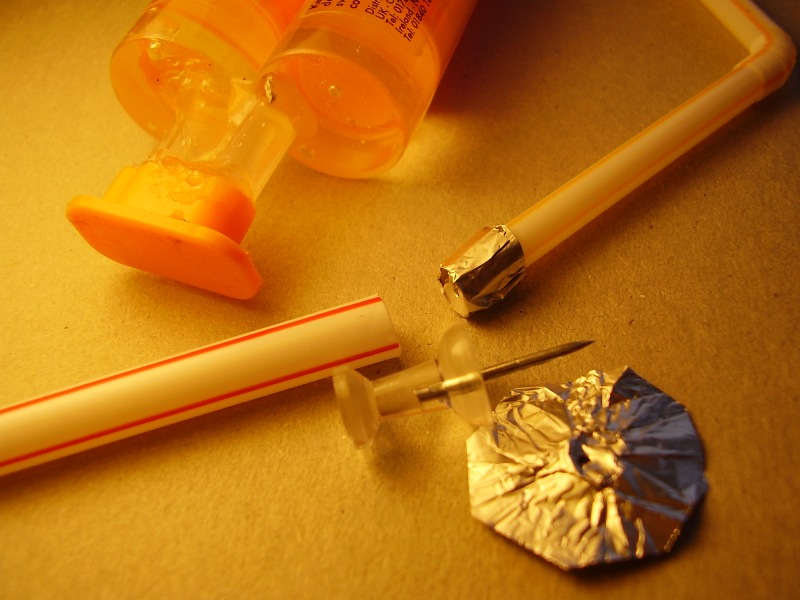
I made the clocks square for the sake of easy construction however I think an octagonal one would work much better, because the asymetry of the head of water wouldn't change much as the clock rotated. I think doing this you could perhaps make a clock that could tell the time usefully and need winding only once a day.
wikipedia on water clocks
air brake
This is an airbrake, probably the simplest clock to make.
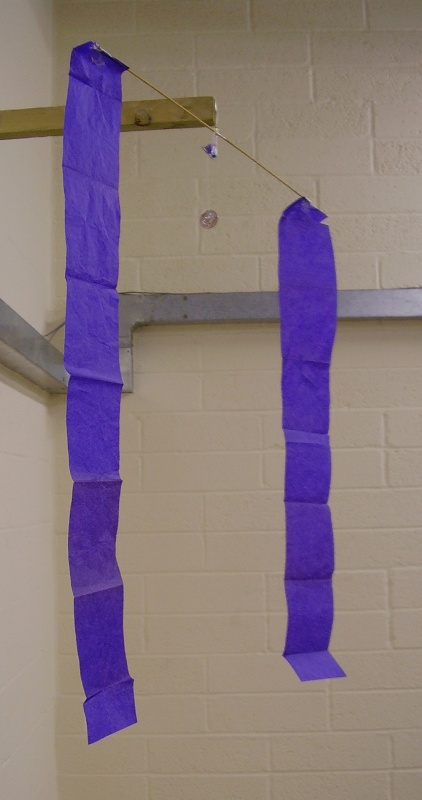
The weight of a penny pulling on a thread makes the streamers rotate very slowly, I could get this one to turn once a minute
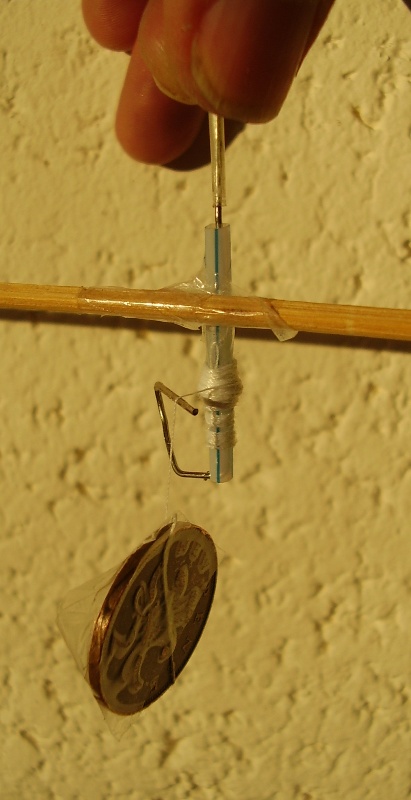
The cotton pulls the bobbin round.
This is one with two contra-rotating arms

It drops very slowly under its own weight, for this reason it isn't obvious what's driving it round so it can be passed off as a perpetual motion machine
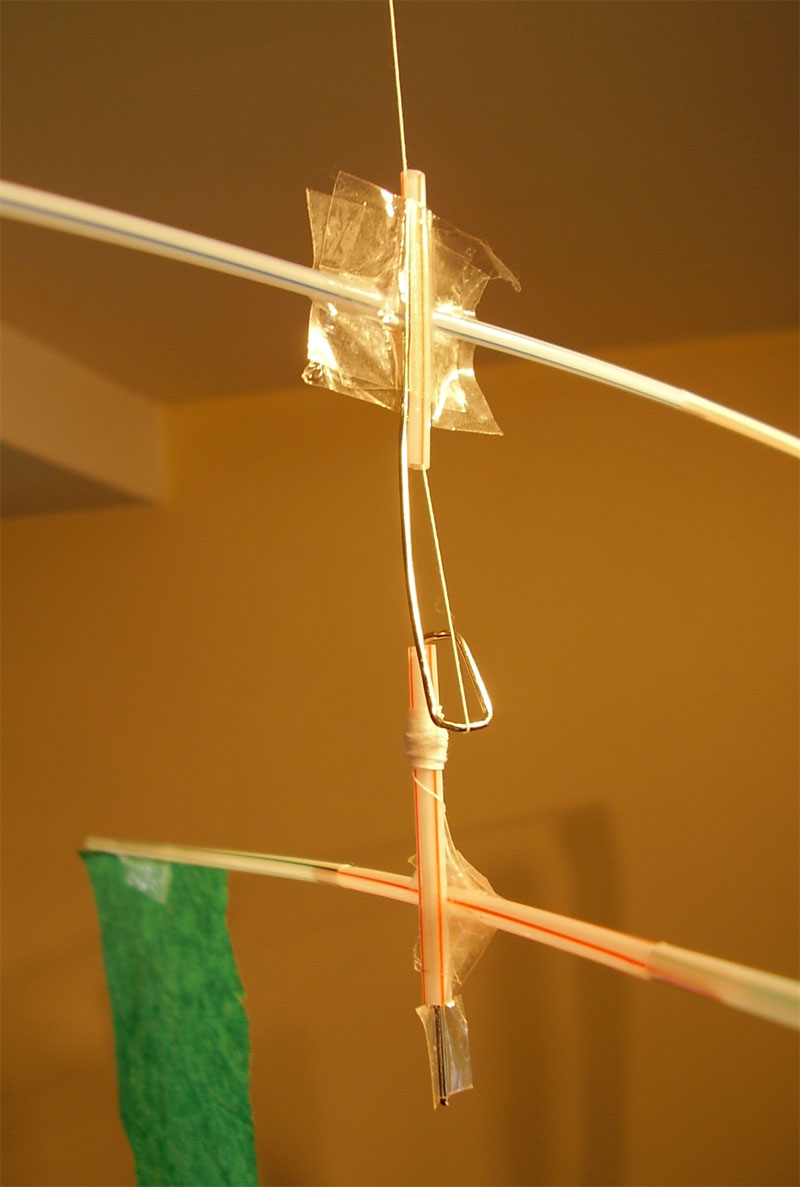
It's made from one large paperclip and six drinking straws. And some tissue paper.
flying pendulum
This is a flying pendulum escapement

Movie
The swivel gets pulled round by the penny pulling downwards on the cotton. As it rotates the bead on the thread swings out and catches on the prong. When this happens it winds itself round & round the prong and then unwinds itself, eventually freeing the swivel which then goes round once more and so on.
flying pendulum on YouTube
flying pendulum clock
read about John Harrison
John Harrison on YouTube
my email is davidvwilliamson@hotmail.com
back to main site























